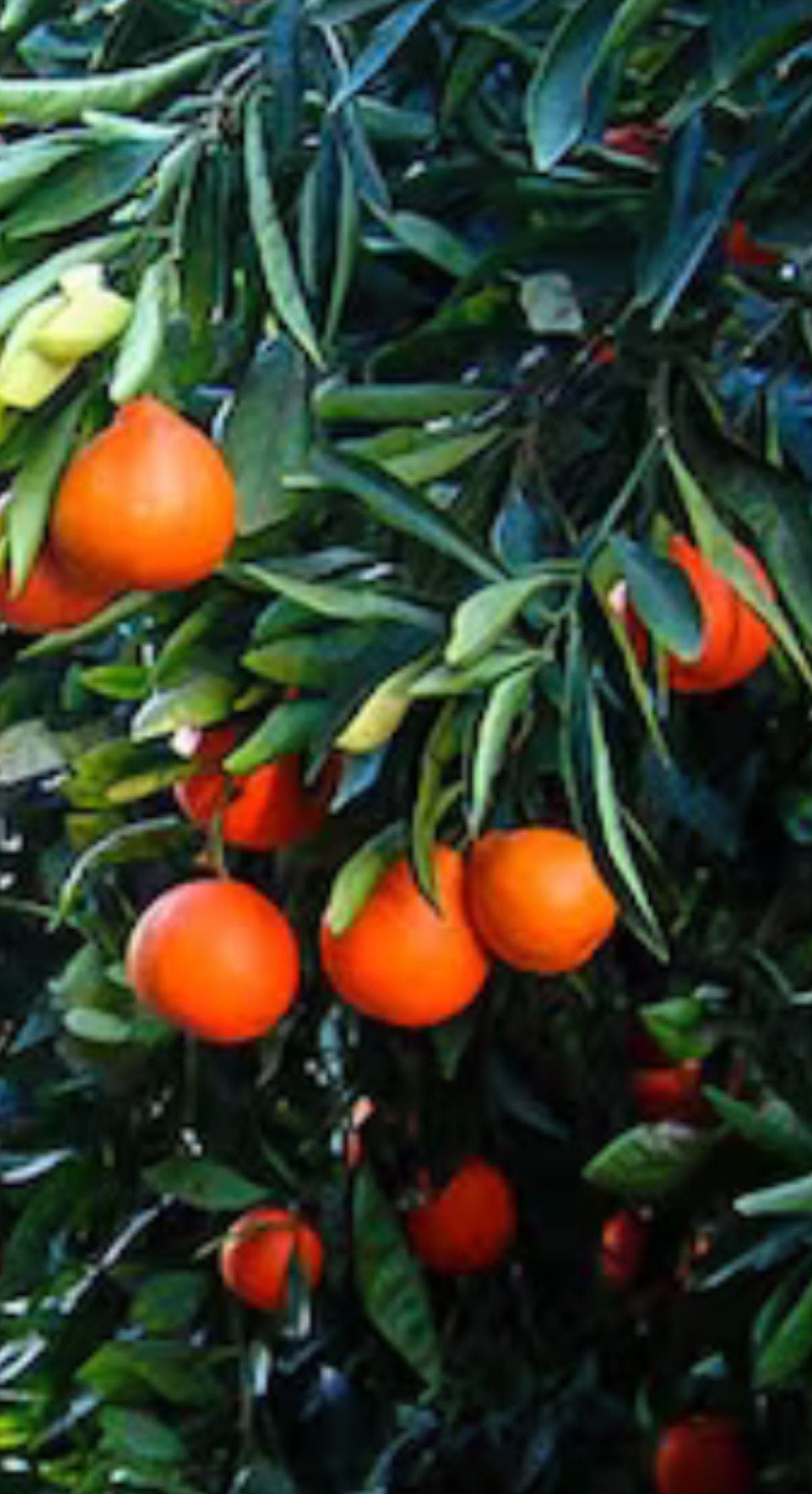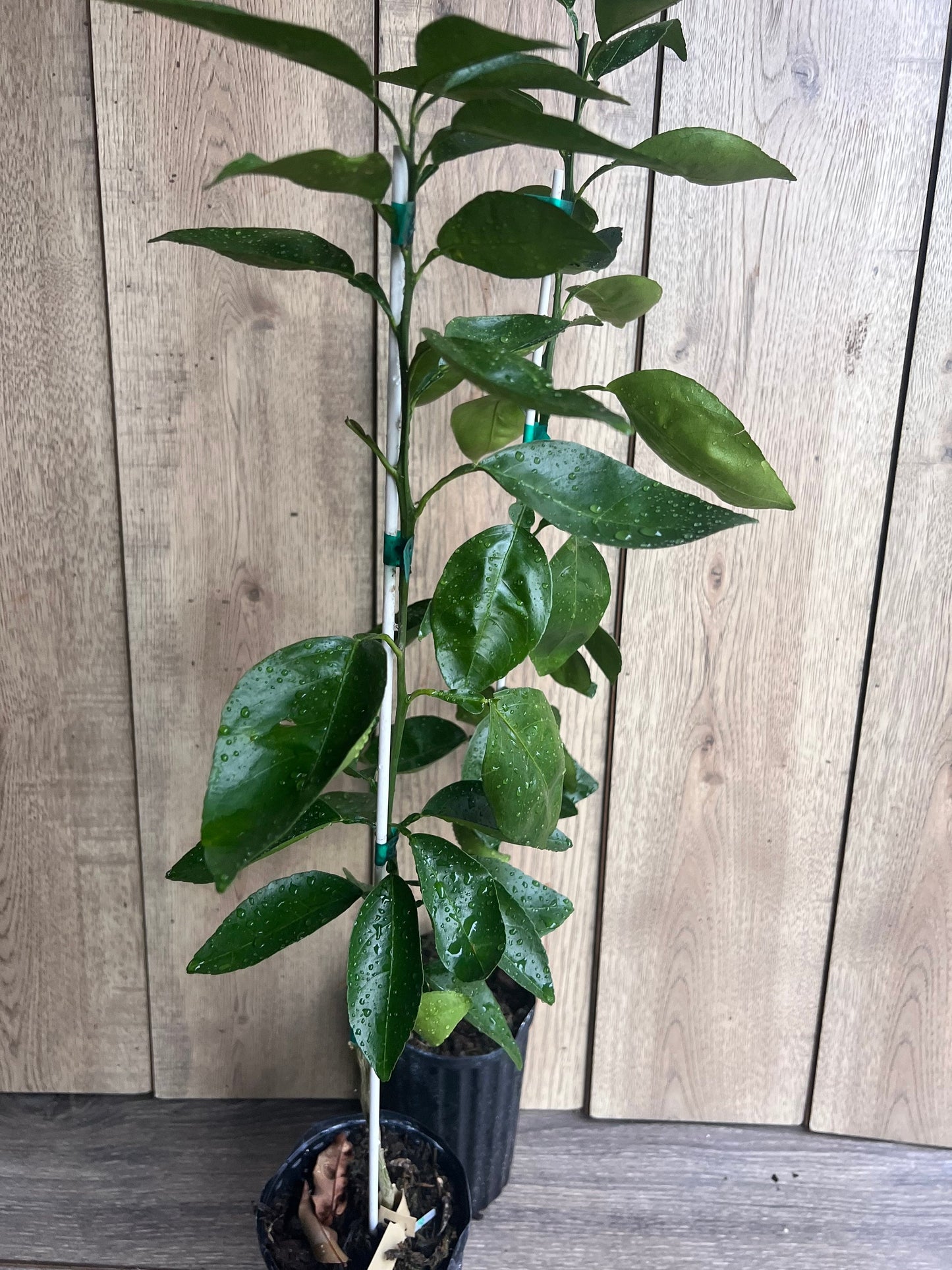Minneola tangelo, Honeybell in Half Gallon Pot, Florida Shipping Only
Minneola tangelo, Honeybell in Half Gallon Pot, Florida Shipping Only
Couldn't load pickup availability
Note: You will receive one Minnieola tree in 1/2 Gal pot similar to the pictures
The Minneola Tangelo is a hybrid citrus fruit, a cross between a Duncan grapefruit and a tangerine, known for its easy-to-peel, bright orange skin and sweet-tart flavor. Often called "Honeybell" due to its bell-like shape, it has a juicy, tangy flesh that is less acidic than grapefruit but more vibrant than oranges. It’s perfect for fresh eating, juicing, or in citrus salads. Minneola tangelo trees are compact and evergreen, with fragrant white blossoms in spring, and thrive in subtropical to tropical climates.
Care Guide for Minneola Tangelo
1. Light
- Full Sun: Requires at least 8 hours of direct sunlight daily for optimal growth and fruit production. A sunny location enhances fruit sweetness and tree health.
2. Temperature
- Warm Climate: Best suited for subtropical to tropical climates, thriving between 55°F and 85°F (13°C to 29°C). Minneola tangelos are sensitive to frost and should be protected if temperatures drop below 28°F (-2°C). In colder regions, grow in containers and move indoors during winter.
3. Soil
- Well-Draining Soil: Prefers sandy loam with a slightly acidic pH (5.5-6.5). Avoid heavy clay soil to prevent root rot. If growing in pots, use a citrus-specific potting mix enriched with perlite or sand for good drainage.
4. Watering
- Consistent Moisture: Keep the soil moist but not soggy. Water deeply when the top 1-2 inches of soil feel dry, especially during hot, dry periods. Established trees are drought-tolerant but benefit from regular watering for optimal fruit production.
5. Fertilization
- Citrus Fertilizer: Apply a balanced citrus fertilizer or one for fruiting trees, like an 8-8-8 or 10-10-10 NPK, every spring and mid-summer. Follow package directions to avoid over-fertilization. Organic options like compost or aged manure also work well.
6. Pruning
- Light Pruning: Prune to maintain shape, remove dead or damaged branches, and improve air circulation, reducing disease risk. Best done in late winter or early spring. Remove any suckers from the rootstock to focus growth on the main branches.
7. Pollination
- Self-Pollinating: Minneola tangelo trees are self-pollinating, so they don’t require another tree for fruit production. However, planting more trees nearby can improve fruit set through cross-pollination.
8. Pests and Diseases
- Pests: Watch for aphids, mealybugs, scale insects, and spider mites. Treat infestations with insecticidal soap or neem oil.
- Root Rot: Avoid overwatering, which can lead to root rot. Ensure the soil is well-draining.
- Diseases: Be alert for citrus canker, powdery mildew, and citrus greening (Huanglongbing). Keep the tree healthy with good air circulation, avoid overhead watering, and control pests like the Asian citrus psyllid to manage diseases.
9. Container Care
- Potting: Choose a large pot with good drainage for container growing. A deep pot allows for root growth, and you can move it indoors during winter in colder climates. Use a well-draining citrus mix.
- Repotting: Repot every few years into a larger container as the tree grows to prevent root crowding.
10. Harvesting
- Fruit Ripening: Minneola tangelos ripen in late winter to early spring, typically from December to March. Harvest when the fruit is deep orange and yields to gentle pressure. Tangelos are juiciest and most flavorful when fully ripe.
- Harvesting Tips: Gently twist or use pruning shears to avoid damaging the tree. The fruit is easy to peel and great for fresh eating, juicing, or adding to salads.
Summary
Minneola Tangelo trees thrive in full sun, well-draining soil, and need consistent watering. Regular fertilization, light pruning, and pest management are essential for optimal growth. Their cold tolerance and self-pollinating nature make them a great addition to subtropical and tropical gardens, or in containers for cooler climates. With proper care, these trees produce sweet, tangy fruit that’s perfect for a variety of uses.
Share




